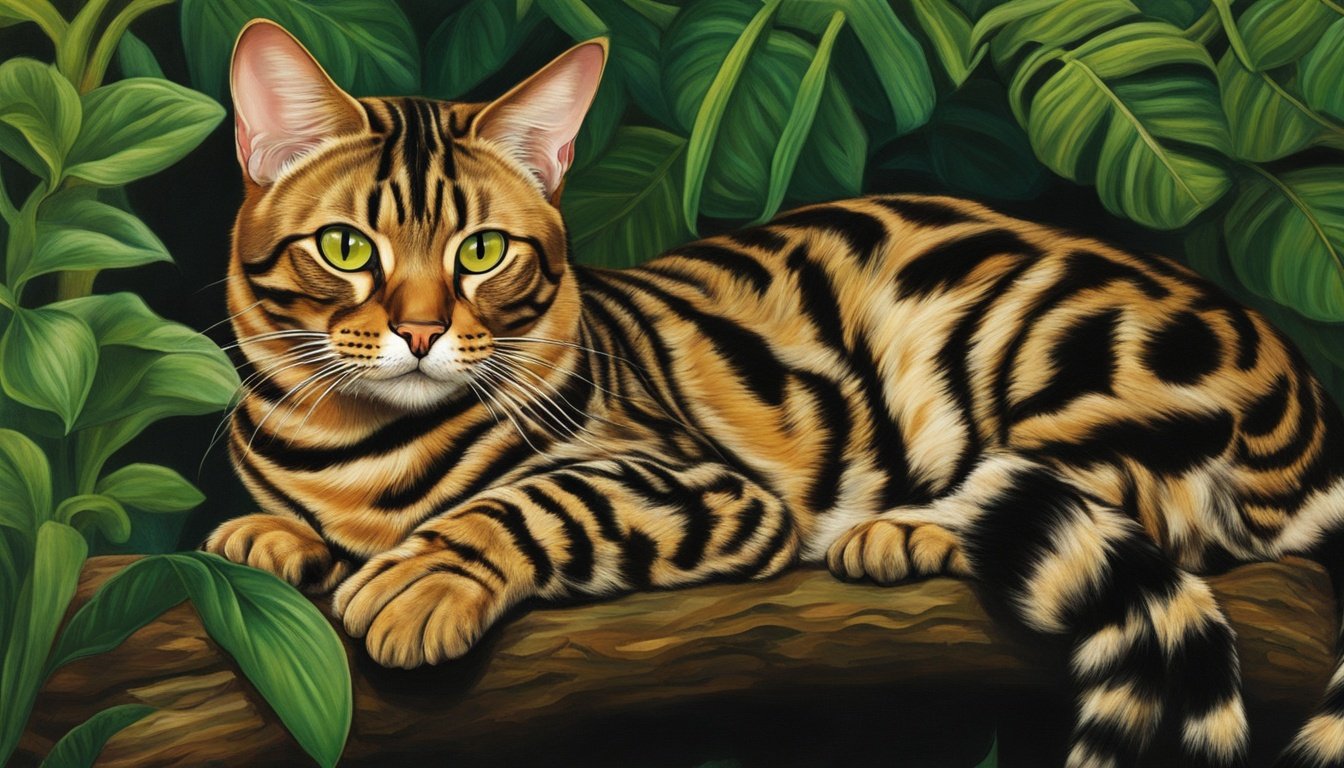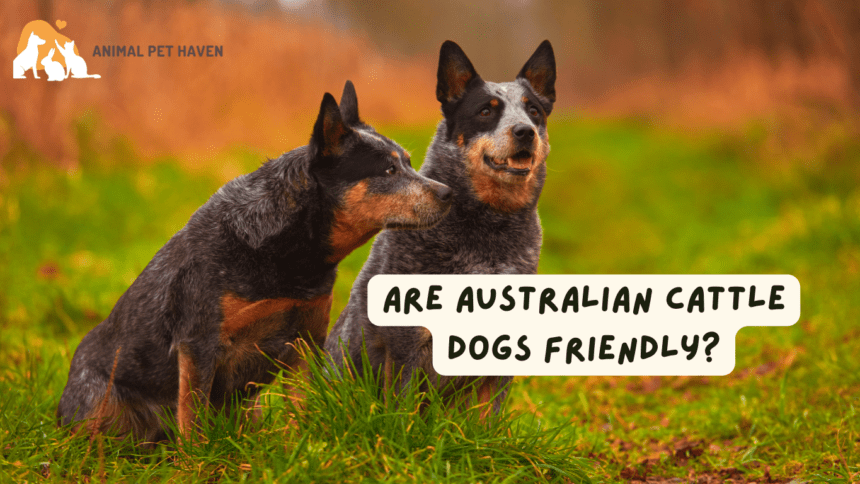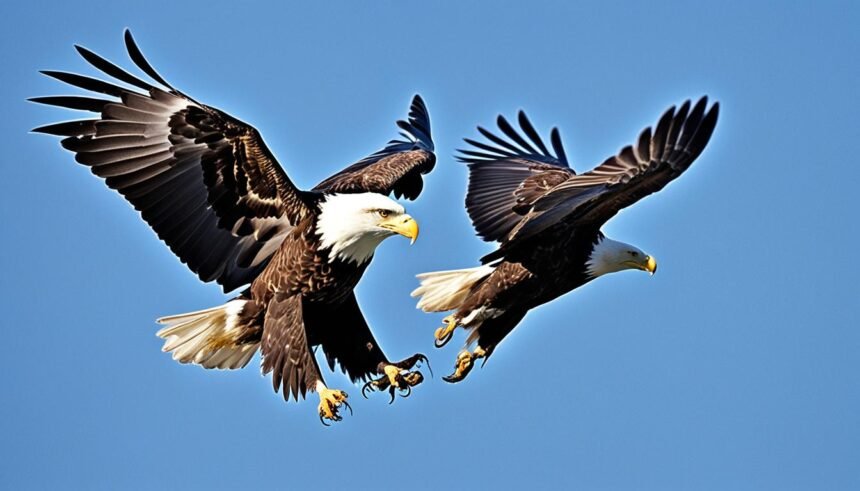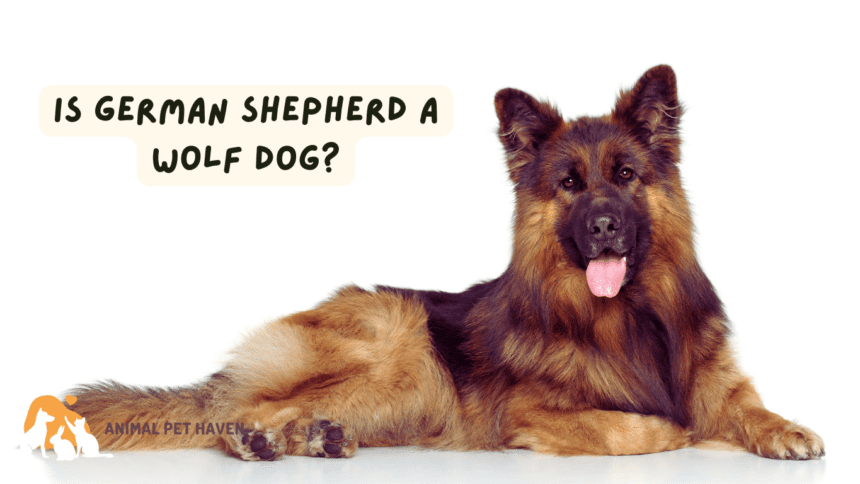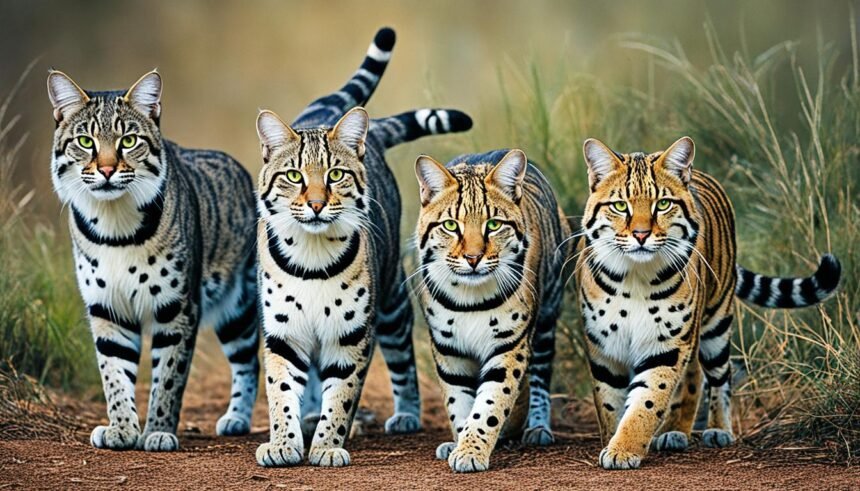Bengal cats are a mix of domestic and wild cats that have become very popular. They were first made in the 1960s by crossing domestic cats with Asian leopard cats. Bengals are the only domestic cats that have rosettes like those on wild cats such as leopards and jaguars.
Their unique coat patterns and colors come from mixing domestic and wild cats. Breeders then picked the best traits to make them look even more exotic.
More and more people want Bengal cats, making them a top choice in The International Cat Association (TICA) registry. In 1992, there were only 125 Bengal breeders in TICA. By 2019, that number jumped to almost 2,500 worldwide, showing how much people love these cats.
Bengal cats have a very old history. They come from a different species that split from domestic cats millions of years ago. This makes them a special part of the cat world.
The Fascinating History of Bengal Cats
The story of Bengal cats started in the 1960s with jean mill, a geneticist-biologist. She was passionate about cat breeding. In 1961, Mill brought a wild cat named Malaysia from Southeast Asia to the U.S. This was the start of the Bengal cat history.
This event led to the creation of the first Bengal cat. This unique hybrid caught the attention of cat lovers all over the world.
The First Bengal Cat Hybrid
In 1963, a big step was made in Bengal cat history. Kin-Kin, a healthy Bengal cat hybrid, was born. He was the result of mixing a wild cat named Malaysia with a domestic black cat.
This achievement opened doors for more work on the breed. It made cat lovers and breeders very interested.
Developing the Bengal Breed
After Kin-Kin was born, jean mill started a serious breeding program. She aimed to make Bengal cats immune to feline leukemia virus. Mill wanted to mix wild leopard cats with domestic cats.
This would create a breed that was both exotic and tame. By 1982, Mill had a big win. She bred a small wild cat with a unique golden-orange color, named Delhi.
Delhi was one of the first Bengal cats. He helped shape the breed’s look and personality.
As the breeding continued, Bengal cats got noticed by big cat organizations. In 1983, TICA officially recognized the Bengal breed. By the 1990s, there were about 125 Bengal breeders with TICA. The breed was gaining fans worldwide.
| Year | Event |
|---|---|
| 1961 | jean mill brings Malaysia, a wild cat, from Southeast Asia to the USA |
| 1963 | Kin-Kin, the first bengal cat hybrid, is born |
| 1982 | Delhi, a foundation bengal, is bred by jean mill |
| 1983 | The Bengal breed gains recognition by TICA |
| 1991 | Bengal cats are introduced in a TICA championship |
Over time, Bengal cats have become even better. Breeders work hard to keep their looks and health up. Today, Bengal cats are loved for their stunning coat patterns. They look like wild leopards with rosettes and marbled markings.
Now, Bengal cats are adored by cat lovers everywhere. Their beauty, smarts, and loving nature come from the hard work of jean mill and other breeders. These amazing cats continue to win hearts, reminding us of their incredible journey.
Physical Characteristics of Bengal Cats

Bengal cats are known for their wild look and unique coat patterns. They have a muscular body and a sleek, short coat that highlights their special markings. Their golden shine and stunning patterns come from their Asian Leopard Cat ancestors, making them stand out among other cats.
Coat Colors and Patterns
The International Cat Association (TICA) lists several coat colors and patterns for Bengal cats. These include brown spotted, seal lynx point (snow), sepia, silver, and mink spotted tabby. Bengal cats are the only domestic breed with rosette markings, like those on wild cats like leopards and jaguars. These rosettes vary in shape and size, making each Bengal unique.
Some Bengal cats also have marbled coats. This pattern comes from a specific gene found through genetic research. Marble Bengals have swirling patterns that look like marble or paint, adding more beauty to their coats.
| Coat Color | Description |
|---|---|
| Brown Spotted | Rich, golden-brown base coat with dark brown or black spots and rosettes |
| Seal Lynx Point (Snow) | Light cream base coat with dark seal brown points and blue eyes |
| Sepia | Rich, warm brown base coat with darker brown markings |
| Silver | Silver-gray base coat with black or dark gray spots and rosettes |
| Mink Spotted Tabby | Soft, warm base coat with contrasting spots and rosettes |
Size and Body Structure
Bengal cats are medium to large, weighing 8-15 pounds, with some cats being heavier. They have a long, athletic body with strong muscles, showing their wild roots. They are about 13-16 inches tall at the shoulder, with height varying among cats.
One key feature of Bengal cats is their longer rear legs. This, along with their muscles and tail position, gives them a wild look. These traits make Bengals great jumpers and climbers, perfect for an active life.
Personality and Temperament
Bengal cats are known for their unique personalities, blending wild and domestic traits. They are full of energy and love to play, always on the move. Their high intelligence and curiosity make them entertaining and loyal companions.
Active and Playful Nature
Bengal cats are full of energy and love to play. They are agile and have amazing athletic skills. About 40% of them leap high, roll around, and climb. It’s important to give them a fun environment with lots of toys and places to climb.
Many Bengals enjoy playing in shallow water or even swimming. About 60% of them like to join their owners in the shower or bathtub. This adds fun to their playtime.
Intelligence and Trainability
Bengal cats are very smart, which makes them curious and interactive. They learn quickly and do well with clicker-training. They can be taught tricks and enjoy puzzle toys that challenge them.
They are also very vocal, making different sounds to communicate. They need constant companionship and can get into trouble if left alone too long. They might bite or destroy things if bored.
| Bengal Cat Trait | Description |
|---|---|
| Energy Level | High, requiring daily interactive play and exercise |
| Playfulness | Extremely playful, enjoying toys, climbing, and water play |
| Intelligence | Highly intelligent, responsive to training and puzzle toys |
| Vocalization | Vocal, communicating with a variety of sounds and meows |
| Affection | Affectionate with family, often seeking physical contact |
In conclusion, Bengal cats have a unique personality that makes them great companions. They are energetic, playful, smart, and loving. Their trainability and social nature make them a cherished part of the family.
Caring for a Bengal Cat
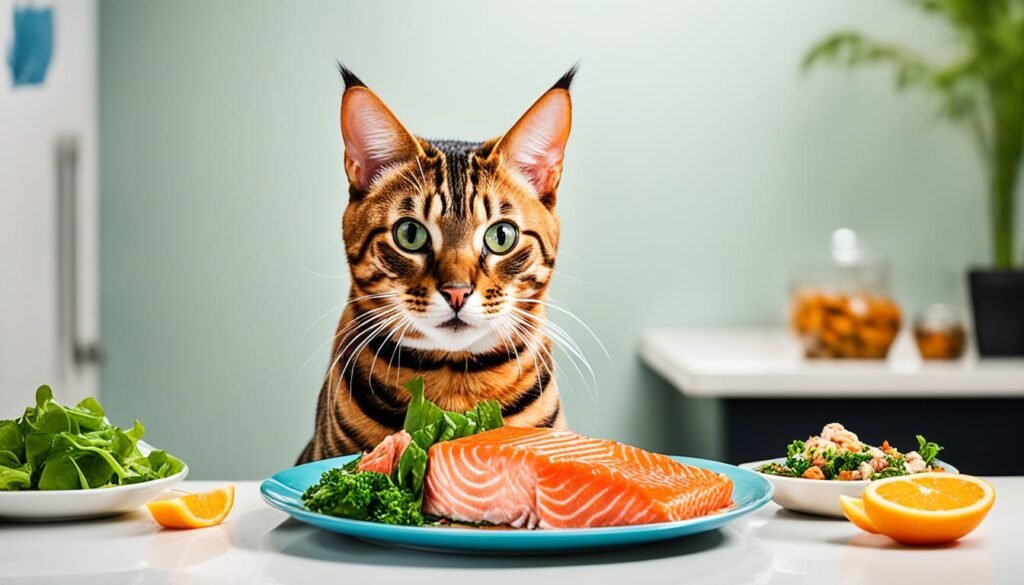
Bengal cats are unique and captivating. They need special care for their diet, grooming, and health. Being related to the Asian leopard cat, Bengals have a wild spirit and a strong build. They need a balanced, high-quality diet to stay healthy and full of energy.
Diet and Nutrition
Bengal cats are very active and muscular. They need a diet full of animal protein to match their lifestyle. Many owners give them raw diets or special cat foods that meet their needs. When picking cat food, choose ones with meat or fish as the main ingredient. This ensures they get the amino acids and fatty acids they need for good health.
- High-quality animal protein sources, such as chicken, turkey, beef, or fish
- Moderate amounts of animal fat for energy and flavor
- Limited carbohydrates, as cats are obligate carnivores
- Essential vitamins and minerals for overall health and well-being
- Adequate moisture content, which can be achieved through wet food or adding water to dry food
Feeding your Bengal a balanced diet can prevent health issues like urinary tract infections, cystitis, and bladder stones.
Grooming and Healthcare
Bengals have beautiful, short coats that are easy to take care of. Brushing them once a week is enough to keep their fur looking good, remove loose hair, and spread natural oils. Brushing also helps you bond with your Bengal and check for any health problems.
It’s also important to trim your Bengal’s nails every two to three weeks and to take care of their teeth to prevent dental diseases. These diseases can cause bad breath, eating problems, and other health issues if not treated.
Bengal cats are usually healthy, living between 12–16 years. But, they might get certain health issues, such as:
- Hypertrophic cardiomyopathy (HCM): The most common heart disease in cats
- Progressive retinal atrophy (PRA): A condition that can lead to blindness
- Pyruvate kinase deficiency (PKD): A genetic disorder that can cause anemia or other blood-related issues
- Patellar luxation: A condition where the kneecap moves or becomes dislocated
To give your Bengal the best care, find a vet who knows about the breed. Regular check-ups and quick treatment for health problems can help your Bengal live a long, happy life. In a UK study, Bengals were found to live a bit less than average for domestic cats. But, with the right care, many Bengals can live into their mid-teens.
Choosing a Bengal Cat
When thinking about getting a Bengal cat, picking a reputable breeder is key. They should follow TICA standards. A good breeder focuses on the health and happiness of their cats. They test for diseases like PK Def, PRA, FIV, FeLv, and HCM. Kittens are also socialized well, with proof of this process.
Choosing a Bengal kitten from a reputable breeder might cost more. But, it means you’re getting a cat from a breeder who cares about quality. Make sure to research the breeder and their cattery. Look at reviews and check for any complaints to be sure they’re respected in the Bengal community.
Finding a Reputable Breeder
Here are things to look for in a reputable breeder:
- Deep knowledge of the Bengal breed’s history, genetics, and behavior
- Active in the Bengal community and sells kittens to other breeders
- Follows TICA standards for Bengals with beautiful looks and exotic traits
- Invests in healthy Bengals with great bloodlines and proper care
- Keeps up with breeding knowledge and helps with kitten care
Preparing for a Bengal Kitten
Before your Bengal kitten comes home, get your house ready. Make sure it’s safe and fun for your kitten. You’ll need some important supplies like:
| Item | Purpose |
|---|---|
| Litter Box | Provides a spot for your kitten to go to the bathroom |
| Food and Water Bowls | Keeps your kitten fed and hydrated |
| Scratching Post | Lets your kitten scratch and stretch safely |
| Toys | Helps your kitten play and think, bonding with you |
| Bedding | Gives your kitten a cozy place to sleep |
Be ready for your Bengal kitten’s unique personality and needs. Early Bengals might be wilder and need experienced owners. Later Bengals are better pets. Talk with your breeder for advice and find a vet for your kitten’s care.
The Unique Genetics of Bengal Cats
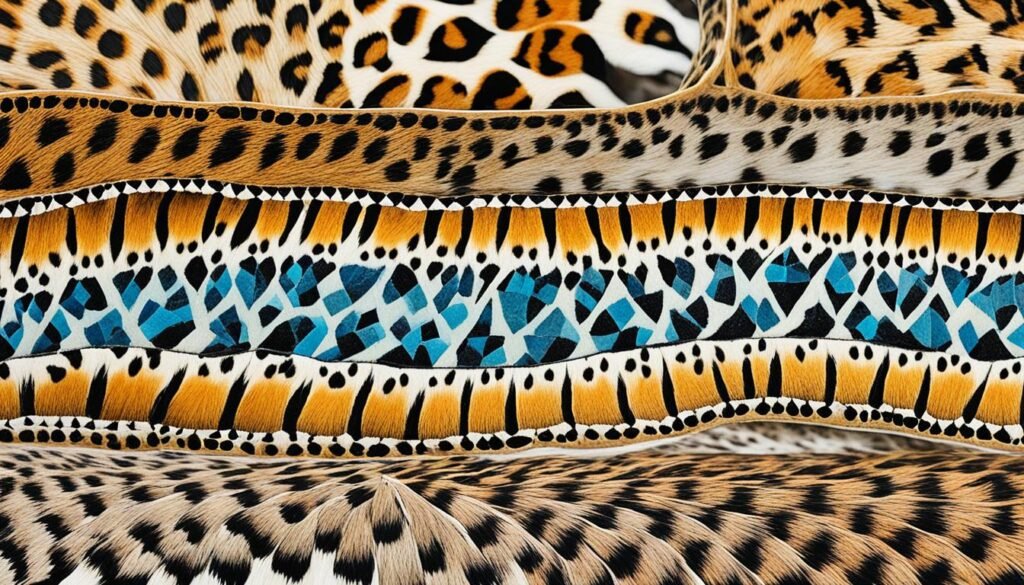
Bengal cats are known for their exotic look, thanks to their wild roots. Genetic studies over 15 years have looked at almost 3,000 DNA samples from nearly 1,000 Bengal cats. These studies show how genes from Asian leopard cats and domestic cats mix to create the Bengal breed.
Genetic Contributions from Asian Leopard Cats
Many think Asian leopard cat DNA is a big part of Bengal cats, but it’s actually a small part. On average, only a few percent of a Bengal cat’s DNA comes from Asian leopard cats. The unique look of Bengals comes from a mix of genes from both Asian leopard cats and domestic cats. This mix shows how hybridization and careful selection can create new breeds.
Domestic Cat Genes and Bengal Traits
The Bengal cat’s striking features, like their spots and shiny fur, come from domestic cat genes. The spots on their coats are mostly from domestic cat genes, not Asian leopard cats. The “glitter” coat, which looks shiny and soft, comes from a domestic cat gene mutation. About 60% of Bengals have this trait.
| Bengal Cat Trait | Genetic Origin | Percentage of Bengals with Trait |
|---|---|---|
| Spotted Coat | Domestic Cat Genes | 100% |
| Glitter Coat | Fgfr2 Gene Mutation (Domestic Cat) | 60% |
| Charcoal Coloring | Asip Gene (Leopard Cat) + Domestic Cat Genome | Rare |
Charcoal Bengal cats stand out with their darker fur. This color comes from a gene from leopard cats, but only with a domestic cat genome. This shows how complex the mix of genes is in creating the Bengal’s look.
Learning about the genetics of Bengal cats helps breeders improve their work. By knowing which genes create certain traits, breeders can aim for Bengal cats that are both beautiful and healthy. The genetics of Bengal cats show how powerful hybridization and selection can be in creating new pets.
Bengal Cats in Popular Culture
Bengal cats have won the hearts of many, including stars and fans across different media. Their unique look and charming personalities make them a hit with famous owners and in movies, TV shows, and ads. Social media has made these exotic pets even more popular, with many Instagram accounts and online groups sharing their beauty and fun moments.
Celebrity Bengal Owners
Celebrities love Bengal cat for their wild looks and lively nature. Some famous Bengal owners include:
- Kourtney Kardashian, reality TV star and influencer
- Bruce Springsteen, legendary rock musician
- Jeremy Clarkson, British television presenter and journalist
- Jake Gyllenhaal, American actor
- Kristin Chenoweth, actress and singer
These stars have made Bengal cats more popular and encouraged others to consider these pets.
Bengals in Movies, TV, and Advertising
Bengal cats are often seen in movies, TV shows, and ads because of their striking looks. They have made a big impact on viewers. Some notable roles include:
| Year | Media | Bengal Appearance |
|---|---|---|
| 1991 | Film: Proof | First appearance of a Bengal cat in a movie |
| 1996 | Film: One Fine Day | Spotted Bengal kittens alongside George Clooney and Michelle Pfeiffer |
| 2001 | TV: Sabrina the Teenage Witch | Bengal cat named Salem as a main character |
| 2008 | Advertising: Whiskas cat food commercial | Bengal cat as a symbol of health and energy |
These roles have made Bengal cats more popular as pets. But, it’s important for those thinking of getting one to know the breed’s special needs and traits.
Frequently Asked Questions About Bengal Cats
Many people wonder about Bengal cat before deciding to get one. While Bengals aren’t hypoallergenic, they might be easier for those with mild allergies. This is because they have short, dense coats that shed less. But, it’s key to spend time with a Bengal first to see how it affects your allergies.
Do Bengal Cats Make Good Pets?
Bengal cat can be great pets for the right owners. They are smart, lively, and love to play. They need a lot of care and attention to be happy. Most Bengals get along well with kids and other pets, but they’re not perfect for every family.
How Much Do Bengal Cats Cost?
The price of a Bengal cat depends on things like its generation, coat color, pattern, and the breeder. Pet-quality Bengals usually cost between $1,800 and $2,500. Those meant for breeding can be more expensive, costing $2,500 to $4,000.
Adoption deposits for Bengal kittens start at $800. Waiting list deposits are about $500, which goes towards the final cost. Kitten prices range from $3,000 to $5,000, with most falling between $3,000 and $4,000. You might also have to pay extra for shipping and taxes.
Are Bengal Cats Legal to Own?
Having a Bengal cat can be affected by laws and bans in different places. Later-generation Bengals are often seen as domestic cats in many areas. But, some places might need you to have a permit or ban Bengal ownership altogether. It’s important to check the exotic pet laws in your area before getting a Bengal.
FAQ
Are Bengal cats hypoallergenic?
Bengal cats might be easier for people with allergies compared to other breeds. They have short, dense coats that shed less. But, how people react to cat allergens can differ. It’s best to spend time with a Bengal before getting one if you have allergies.
Do Bengal cats make good pets?
Bengal cats can be great pets for the right owners. They need a lot of care, attention, and fun activities to be happy. They are smart, active, and love to play. Owners should be ready to give them lots of playtime and a good home to stay healthy and happy.
How much do Bengal cats cost?
Bengal cat prices vary a lot. They depend on things like their coat color, generation, and the breeder. You might pay a few hundred to a few thousand dollars for a Bengal. Later-generation Bengals from good breeders usually cost between
FAQ
Are Bengal cats hypoallergenic?
Bengal cats might be easier for people with allergies compared to other breeds. They have short, dense coats that shed less. But, how people react to cat allergens can differ. It’s best to spend time with a Bengal before getting one if you have allergies.
Do Bengal cats make good pets?
Bengal cats can be great pets for the right owners. They need a lot of care, attention, and fun activities to be happy. They are smart, active, and love to play. Owners should be ready to give them lots of playtime and a good home to stay healthy and happy.
How much do Bengal cats cost?
Bengal cat prices vary a lot. They depend on things like their coat color, generation, and the breeder. You might pay a few hundred to a few thousand dollars for a Bengal. Later-generation Bengals from good breeders usually cost between $1,000 to $3,000. Bengals with special coat colors might cost even more.
Are Bengal cats legal to own?
Owning a Bengal cat can be illegal in some places due to local laws. Before getting a Bengal, check the laws in your area. Some places allow all Bengal cats, while others only allow certain generations. It’s important to know the rules before bringing a Bengal home.
How big do Bengal cats get?
Bengal cats are bigger than average house cats. Males can weigh 10-18 pounds and females 8-12 pounds. They have a strong, athletic body and long legs. Bengals usually reach their full size by 1-2 years old.
Do Bengal cats shed a lot?
Bengal cats have a short, dense coat that sheds less than some other breeds. They still need regular brushing to keep their coat healthy and reduce shedding. Eating well can also help keep their coat shiny and cut down on shedding.
Are Bengal cats vocal?
Bengal cats are very talkative and like to communicate with their owners. They might make sounds like chirping, trilling, or just meowing. Some Bengals talk more than others, but they all enjoy chatting with their humans. This way, they can tell us what they need or want.
Do Bengal cats like water?
Many Bengal cats love water and enjoy playing in it. This might come from their wild ancestors, who are good swimmers. Some Bengals like to play with their water bowls or even join their owners in the shower. But, not all Bengals like water, so it varies from cat to cat.
,000 to ,000. Bengals with special coat colors might cost even more.
Are Bengal cats legal to own?
Owning a Bengal cat can be illegal in some places due to local laws. Before getting a Bengal, check the laws in your area. Some places allow all Bengal cats, while others only allow certain generations. It’s important to know the rules before bringing a Bengal home.
How big do Bengal cats get?
Bengal cats are bigger than average house cats. Males can weigh 10-18 pounds and females 8-12 pounds. They have a strong, athletic body and long legs. Bengals usually reach their full size by 1-2 years old.
Do Bengal cats shed a lot?
Bengal cats have a short, dense coat that sheds less than some other breeds. They still need regular brushing to keep their coat healthy and reduce shedding. Eating well can also help keep their coat shiny and cut down on shedding.
Are Bengal cats vocal?
Bengal cats are very talkative and like to communicate with their owners. They might make sounds like chirping, trilling, or just meowing. Some Bengals talk more than others, but they all enjoy chatting with their humans. This way, they can tell us what they need or want.
Do Bengal cats like water?
Many Bengal cats love water and enjoy playing in it. This might come from their wild ancestors, who are good swimmers. Some Bengals like to play with their water bowls or even join their owners in the shower. But, not all Bengals like water, so it varies from cat to cat.

